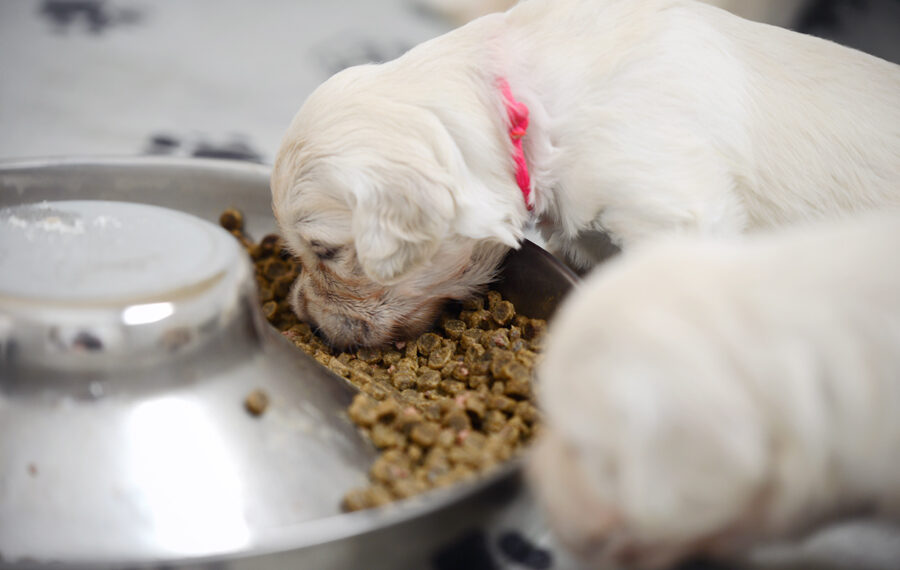Introducing solid foods to your puppy is a significant milestone in their growth and development. This comprehensive guide will help you understand when and how to start solid foods for your puppies to ensure the best puppy nutrition. By following these guidelines, you’ll set your puppy on a path to a healthy and happy life.
When to Start Solid Foods for Puppies
Recognizing the Right Time
- Weaning Age: Puppies typically begin the weaning process around 3 to 4 weeks of age.
- Behavioral Signs: Look for cues such as increased interest in their mother’s food or a decrease in nursing.
Factors Influencing Timing
- Breed and Size: Smaller breeds might need solid foods earlier than larger breeds.
- Health Status: Puppies with specific health conditions might require adjustments in their feeding schedule.
How to Introduce Solid Foods
Gradual Introduction

- Mixing Foods: Start by mixing a high-quality puppy food with water or puppy milk replacer to create a gruel.
- Consistency: Gradually thicken the mixture over time as your puppy gets used to solid textures.
Choosing the Best Puppy Foods
- Nutritional Content: Opt for foods rich in proteins, fats, vitamins, and minerals.
- Brand Reputation: Select brands known for the best dog foods to ensure quality and safety.
Best Practices for Feeding Puppies
Creating a Feeding Schedule
- Consistency is Key: Feed your puppy at the same times each day to establish a routine.
- Portion Control: Follow the feeding guidelines on the puppy food packaging, adjusting for your puppy’s growth and activity level.
Monitoring Your Puppy’s Health
- Weight and Growth: Regularly check your puppy’s weight to ensure they are growing at a healthy rate.
- Behavior and Energy Levels: Monitor your puppy’s behavior and energy levels as indicators of proper nutrition.
Common Challenges and Solutions
Picky Eaters

- Variety: Offer a variety of puppy foods to keep your puppy interested in their meals.
- Patience: It might take a few tries for your puppy to accept new foods. Be patient and persistent.
Digestive Issues
- Slow Transition: Gradually introduce new foods to avoid upsetting your puppy’s stomach.
- Consult a Vet: If digestive issues persist, consult your veterinarian for advice on the best puppy nutrition options.
Long-Term Puppy Nutrition Tips
Transitioning to Adult Dog Food

- Age Considerations: Begin transitioning to adult dog food around 12 months for most breeds, though this can vary.
- Gradual Switch: Mix the adult food with puppy food over a week to ensure a smooth transition.
Maintaining a Balanced Diet
- Essential Nutrients: Ensure your dog’s diet includes a balance of proteins, fats, carbohydrates, vitamins, and minerals.
- Regular Vet Check-ups: Schedule regular vet visits to monitor your dog’s nutritional needs and adjust their diet as necessary.
Conclusion
Providing the best puppy nutrition involves careful planning and attention to your puppy’s needs. By starting solid foods at the right time, choosing the best dog foods, and following a consistent feeding routine, you can ensure your puppy grows into a healthy and happy adult dog. Always consult with your veterinarian for personalized advice and support in your puppy’s nutrition journey.
Remember: Your commitment to your puppy’s nutrition today sets the foundation for a lifetime of health and well-being.





















